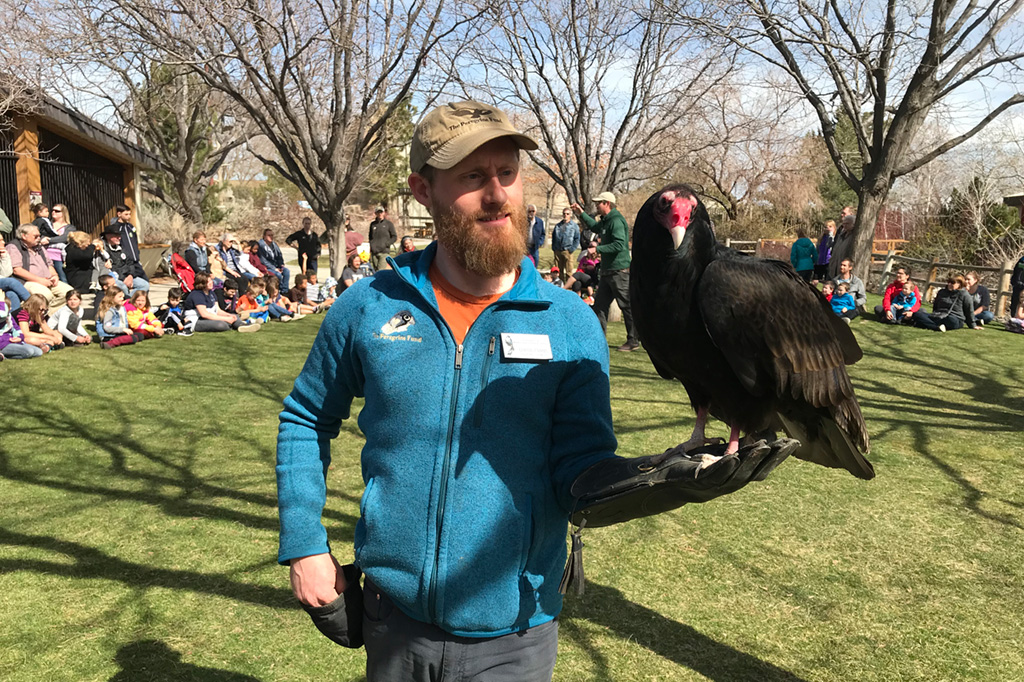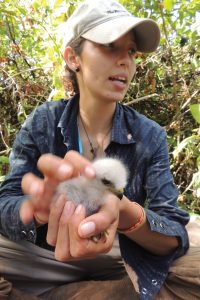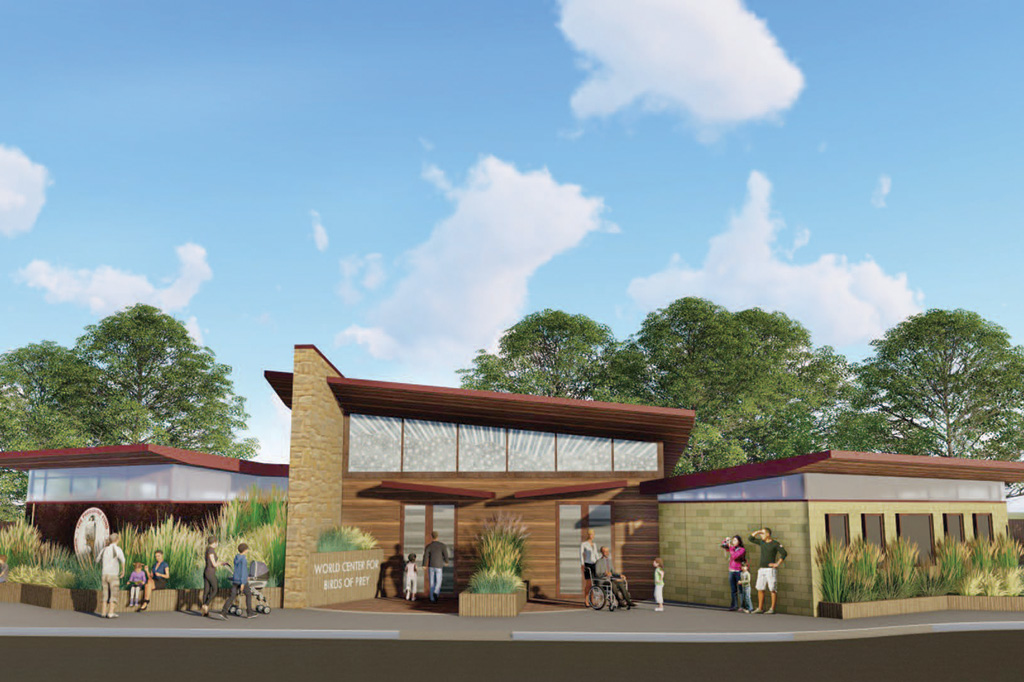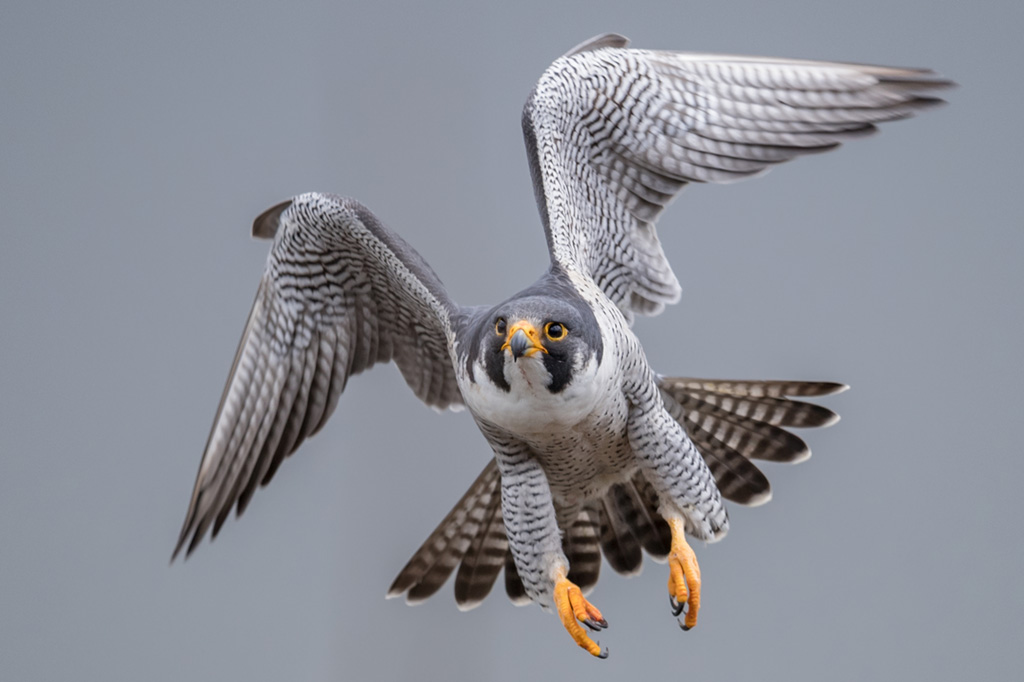In an outdoor area at The Peregrine Fund’s World Center for Birds of Prey, a small group of people gather around a bird handler who holds a miniature owl on her gloved hand while sharing information about the bird. Around the corner, a family pauses to take a photo of the bald eagle in one of the several outdoor enclosures in which raptors from around the world perch just a couple of arm lengths away. Inside the interpretive center, a group of exuberant school children move from one exhibit to another as they learn about raptors in the wild.
This up-close and intimate introduction to these wild birds is what helps educate visitors about raptor conservation and the global programs of The Peregrine Fund, an international nonprofit organization that works to breed and conserve endangered raptors around the world.
Since moving to Boise from New York in 1984, The Peregrine Fund has seen an explosion in the number of visitors, from tourists to school classrooms, who come to learn more about birds of prey and raptor conservation. According to Tate Mason, director of the World Center, in the past five years the number of visitors has increased from 28,000 in 2015 to an estimated 52,000 this year, clearly stretching the facility’s ability to accommodate the growth.

Education coordinator Curtis Evans holds Lucy the turkey vulture. Photo courtesy The Peregrine Fund.
Expanding Education
“We have become one of the preeminent tourist destinations in the state of Idaho and we’re also an integral part of our local schools’ ability to teach science and to get their kids fired up about science,” said Mason. “Unfortunately, there is not a room in this building that holds more than 50 people, and, in fact, we’ve had to turn away school groups for lack of space.”
That will soon change with the support of POWER Engineers, a global engineering firm, and its nonprofit organization POWER Foundation, both of which are partnering with The Peregrine Fund to create a new state-of-the-art educational classroom that will more than double the current learning space and provide room to grow in the future.
Jim Haynes, chief administrative officer of POWER Engineers, explained that the foundation was formed in 2012 to support POWER’s philanthropic goals, including promoting STEAM (science, technology, engineering, arts and mathematics) education.
Funded by a five-year $100,000 financial pledge from the foundation, and pro-bono structural, electrical,
and mechanical services provided by the engineering firm, the new classroom will connect students with biologists around the world as they work in the field with raptors.
‘Global Field Trips’
“The Peregrine Fund has projects in 27 countries around the world, and we want to connect people, primarily kids, to those projects,” said Mason, explaining that the new classroom will feature video teleconferencing technology that will allow students to go on “global field trips.”
“We are going to create this connection where children can have a visual and audio conversation with biologists in other countries who are actually working in the field with raptors. This will also give biologists in the field the ability to talk to a classroom from wherever they are.”
In addition to the audiovisual upgrades, the classroom will have new, full-spectrum lighting, new flooring, cabinetry, a retractable projection screen, new doorways and other expansions.
“Supplementing our grant with pro-bono engineering work was a natural evolution,” said Haynes. “It’s been exciting for us to not only financially support the center’s expansion, but also to have a vital hands-on role in helping the plans come to life.”
In the Beginning…
“When The Peregrine Fund moved to Boise in 1984, they were up here on a desert hill raising falcons in captivity. People must’ve thought it was something like Area 51,” laughed Mason, referring to the purported secret UFO holding area in Nevada. “Here they were, building a bunch of big barns and raising birds and endangered species and it was all behind fences, a very secretive operation, and it was like ‘what is going on up there’? So the people with The Peregrine Fund thought, ‘let’s bring people in and tell our story’ and that led to building the interpretive center in 1992.”
The 580-acre site sits on top of a hill overlooking Boise. The campus includes a falconry archives library, breeding facilities that produce chicks from captive flocks of rare and endangered birds of prey for release to the wild, and an interpretive center that includes classrooms used for raptor education.

Technology will allow students to meet biologists around the world like Carolina Corder Rodriguez in the Dominican Republic. Photo courtesy The Peregrine Fund.

Rendering of the World Center for Birds of Prey expansion. Rendering courtesy The Peregrine Fund.
Teaching Science Through Conservation
Over the years, the raptor education program has become a key part of how area elementary teachers teach science.
“We’ve spoken to educators, and they tell us that The Peregrine Fund is directly teaching what they are teaching their kids,” Mason said. “An example would be if you’re teaching children about structure and function and you have a peregrine falcon on your glove, you’d talk about how their feet are built, or how the beak is built, and explain how engineers have used that information to design airplanes, observing how a peregrine falcon can do what it does,” Mason said.
“If you watch a group of third-graders around an owl, and they hear about how owls are in nature and captivity, the kids get really hooked and ask authentic questions,” he continued. “Those are the first two steps of the scientific method: observation and questioning. We bring kids into the scientific process without them even knowing it.”
The new classroom is part of The Peregrine Fund’s HATCHED Campaign, an expansion of the World Center that will include 11 new outdoor bird exhibits, a new Global Raptor Education Welcome Center, an outdoor amphitheater and more parking. The first stage of the expansion will begin with the classroom in November 2019, with the other additions slated to go up through 2020.
“We were looking for an entity that would be able to use the funds for science, and our foundation allows POWER to fulfill its mission of thinking globally, and acting locally,” Haynes said.
He noted that POWER Engineers has its own connection to helping raptors in the wild. “Much of the engineering we do around the country involves power lines, which are a threat to raptors,” he said. “Some of our work is built on protecting the birds from power lines. Quite a few of our biologists are raptor experts, so this project is just a great fit.”

